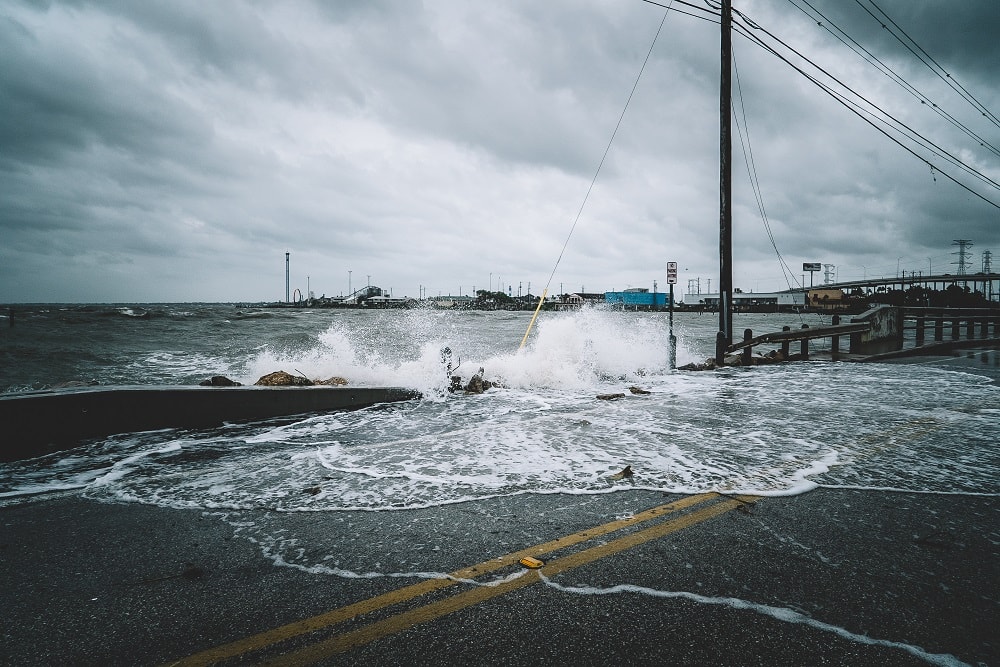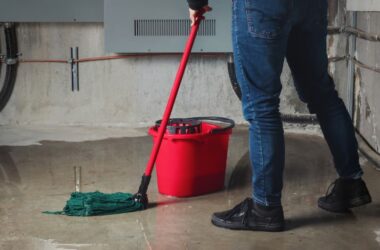When a Florida hurricane looms, protecting your home from interior water damage becomes vital. You’ll want to guarantee windows are sealed and doors reinforced to prevent water intrusion. But that’s just the beginning. Have you checked your gutters lately to verify they’re clear? A simple oversight here can lead to significant problems. And what about your roof? Loose shingles could be an unexpected gateway for rain. As you prepare, consider these essential steps to safeguard your home effectively. Curious about more strategies to keep your interior dry and secure during a storm?
Inspect and Seal Windows
When a hurricane looms, one of the first things you should do is inspect and seal your windows.
Start by checking each window for cracks or gaps where water might seep through. Even the smallest crack can become a major problem during a storm. Use a flashlight to spot any imperfections, especially around the window frame and glass.
Once you’ve identified problem areas, use a good quality sealant or caulk to fill any gaps. Be certain you choose a waterproof sealant designed for exterior use to withstand driving rain and strong winds.
Next, examine the condition of the weather stripping around your windows. If it’s old or damaged, replace it with new weather stripping to guarantee a snug fit. This step is essential as it acts as a first line of defense against water intrusion.
Reinforce Doors and Frames
While windows are a critical point of concern, doors and frames also demand your attention to prevent water damage during a hurricane. Start by examining your exterior doors for any gaps or weaknesses. Tighten loose hinges and guarantee the door sits snugly in its frame. You might consider installing door seals or weatherstripping to create a watertight barrier, preventing rain from seeping through.
Reinforcing the door itself is another important step. If your door is hollow or made of flimsy material, replace it with a solid core door for added strength against strong winds. You can also install a door brace, which will stabilize and support the door against intense pressure. These braces are easy to set up and provide an extra layer of security.
Pay attention to the frame too. Check for any signs of rot, warping, or damage, as these can compromise the door’s ability to withstand hurricane conditions.
Reinforce the frame with steel plates or brackets, which help distribute the force of the wind more evenly. By taking these steps, you’ll greatly reduce the risk of water intrusion through your doors during a hurricane.
Clear and Maintain Gutters
Gutters, like the veins of your home, play an essential role in directing water away from your roof and foundation during a hurricane. If they’re clogged, rainwater can overflow, leading to leaks and interior water damage.
To guarantee your gutters do their job effectively, start by removing leaves, twigs, and debris. Use a small trowel or your gloved hands to scoop out the muck, then rinse the gutters with a hose to clear out any remaining dirt.
Inspect the downspouts for blockages, guaranteeing water flows freely. If water isn’t draining properly, try using a plumber’s snake or a high-pressure hose to dislodge any obstructions.
It’s a good idea to check the gutters’ alignment, too. They should slope slightly toward the downspout to guide water efficiently.
Regular maintenance is key, especially before hurricane season. Consider installing gutter guards to minimize debris buildup in the future, this can help reduce water damage by keeping the water moving away from your structure during heavy rains.
Don’t overlook the importance of securely fastening your gutters to the fascia. Loose gutters can detach during high winds, causing damage not just to your home, but potentially to your neighbors’ properties as well. Taking these steps helps protect your home from costly water damage.
Secure Roof and Shingles
A sturdy roof is your home’s first line of defense against hurricane damage, and securing your shingles is essential to maintaining that strength. Start by inspecting your roof for any loose or damaged shingles. If you spot any, replace them immediately. Loose shingles can be ripped away by strong winds, leaving your home exposed to water damage. Use roofing nails or adhesive to guarantee each shingle is firmly in place.
Consider applying a waterproof sealant to enhance your roof’s resistance to heavy rainfall. This step can help prevent water from seeping underneath your shingles.







